As frequent Harp Guitar Gathering goers know, we have been trying to feature an historical and/or classical music performer each year. Optimally, that means someone playing “traditional” or period music on an actual period instrument (or reproduction). The list has included in the past Andreas David, Brian Torosian, Oleg Timofeyev, and (to a certain extent) James Kline.
Sadly, the list of those doing something significant on historical harp guitar is quite short, and the repertoire is comparatively limited. So for this year’s 11th Gathering, as an alternative, I suggested Pete Bradshaw to our Gathering hosts.
Wait a minute – isn’t Pete Bradshaw the guy who plays Hawaiian slack key on a modern, steel-string Kathy Wingert harp guitar? (Yes, three of them, actually) But Pete has been playing classical guitar on and off since he was 10 years old, in between learning other music like (he tells me) country blues, John Fahey, Martin Simpson, surf guitar(!), and Hawaiian slack key. So not too unusual that in the last couple years Pete has been dedicating himself to a specific new endeavor – playing classical guitar repertoire on the steel-string harp guitar.
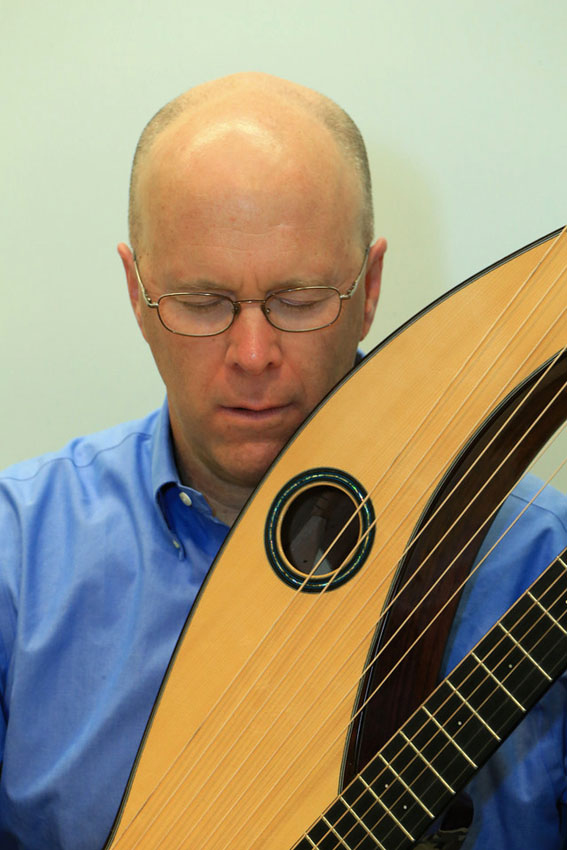
True, many steel-string fingerstyle players dabble in it, and have some classical pieces in their repertoire (though typically performed within their own styles). What Pete is doing is methodically adapting and applying “strict” classical guitar technique, discipline and philosophy to his instrument (something another recent Gathering attendee, Mark Farley, has been avidly exploring also). Pete even convinced renowned classical guitar teacher Martha Masters (California State University Fullerton and Loyola Marymount University in Los Angeles) to take him on as her first (the world’s first?) classical guitar student on steel-string harp guitar. The oxymoronic, paradigm-disrupting audaciousness of it all certainly took me by surprise, but is very cool, I have to say (even more fun was had when Pete played for and was critiqued by Andrew York)!
So for HGG11’s second Saturday morning segment (Dave Powell was first), Pete Bradshaw presented “Classical Music Interpretation for Steel String Harp Guitar,” another very successful Gathering Feature debut!

Via live performance and PowerPoint, he (and Lucy, at right) took us through several finished pieces and how he approached them:
- Bach: Allemande from Cello Suite BWV 1007
- Couperin: Mysterious Barricades
- Sor: Three Studies
- B Minor
- D
- And another one in D
- Chopin: Waltz in A Minor
- Bach: Gigue from Cello Suite BWV 1009
Pete’s self-invented 7-bass harp guitar tuning, by the way, is: Guitar: Standard; Subs: Bennett tuning with an added F – i.e: G (low), A, B, C, D, F, G (high).
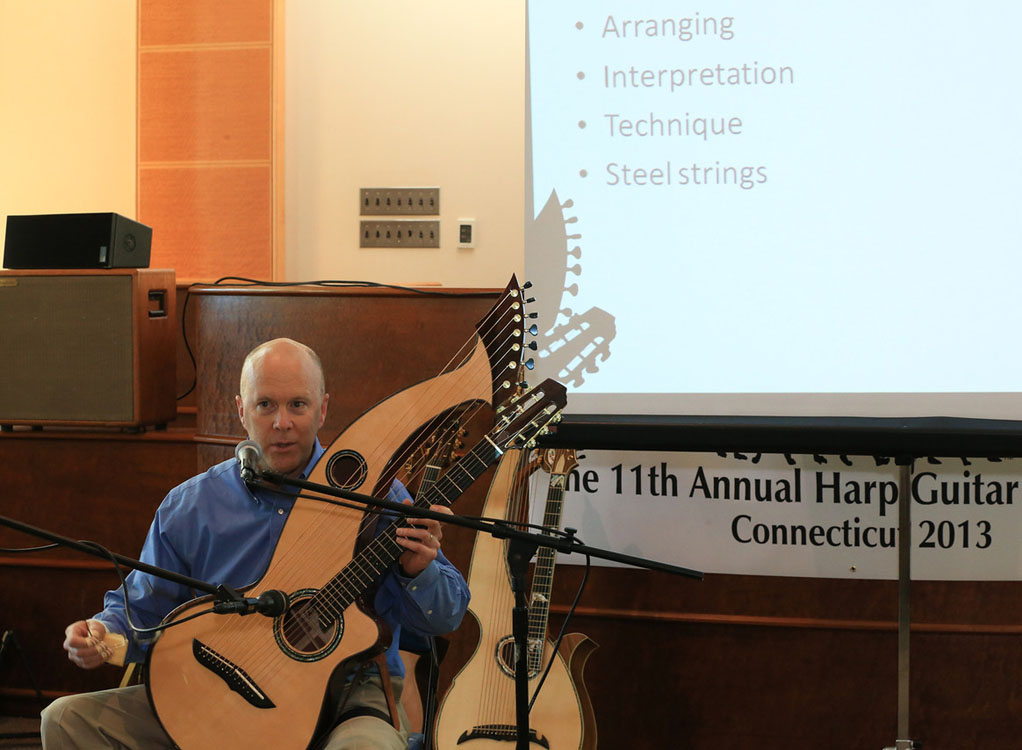
I was not surprised to hear that the classical players were “jealous” of Pete’s instrument’s sustain capabilities, but was struck by the seeming irony of him working so hard now to stop notes (to give the specifically required musical value to each). Well, I suppose he can get his open-tuning slack key harp guitar fix anytime he wants by picking up a nearby second Wingert…
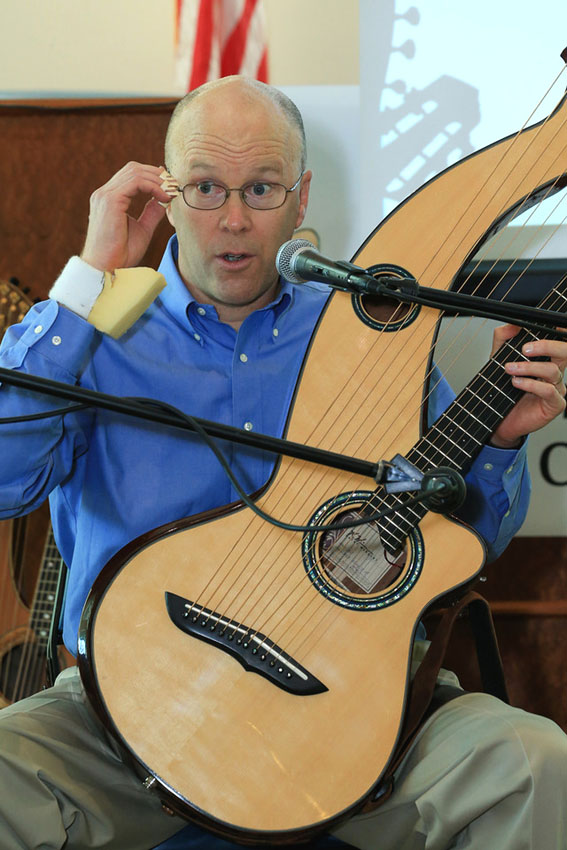
For those who haven’t yet seen it, a key part of the (not so) secret to Pete’s harp guitar success is his wrist-mounted foam sub-bass mute. Genius!
For Sunday morning’s workshop, he took players through this comprehensive list (I’ve learned that “slow practice” is Pete’s No. 1 advice):
- Reaching the subs
- Right hand sub-building exercises
- Classical technique-building exercises
- Practice strategy and schedule
- Posture and the harp guitar
Hey, that’s all the stuff I suck at.
Pete, I need to make an appointment…

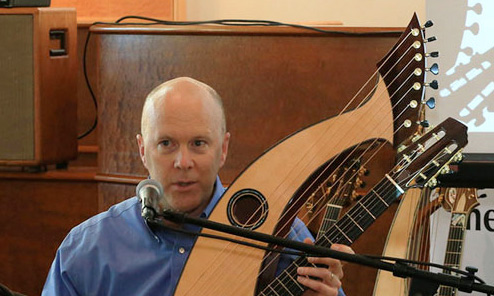
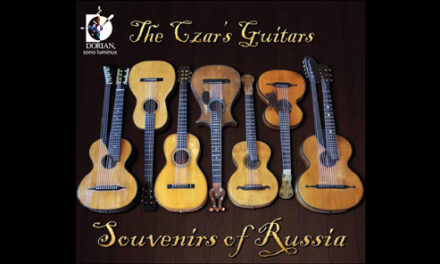
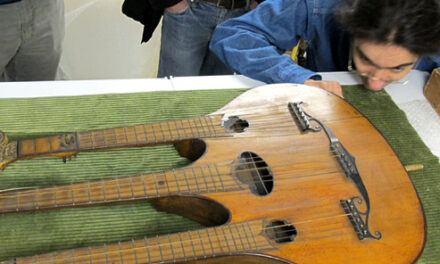
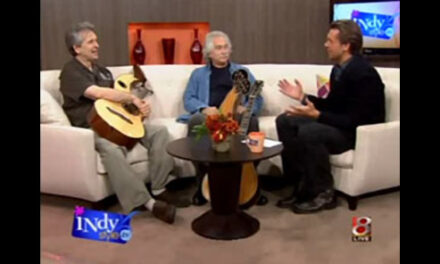
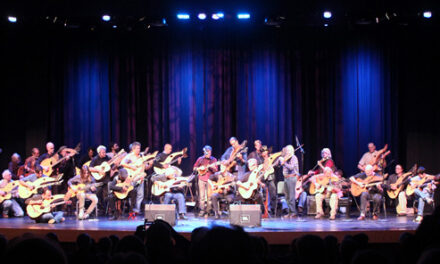
Hello Michael (Schreiner, seems to be German provenance),
nice to hear, that you would watch me and my technique a bit more closely, I will do the best I can to meet you next year in Idaho and to show more of it!
Greetings to all from Germany
Michael
Yes, well done Pete! Thanks.
I studied classical guitar in college and built several classical guitars in the early 70’s so Harp Guitar with its necessary finger style technique was very familiar to me. My workshop preference is one involving proper classical guitar technique and repertoire. That is why I attended Pete’s workshop this year and Oleg Timofeyev’s last year. Mark Foley attended both of them also. I found Pete’s simple exercises and other thoughts very valuable. I hope Michael Hess will attend #12. I’d like to watch his technique bit more closely.
Thanks Pete..